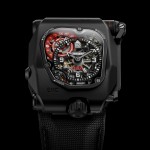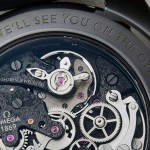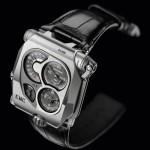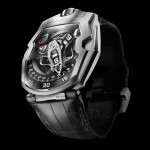News: Urwerk EMC – user-adjustable mechanical movement with electronic time monitoring (with explanation and specs)
Urwerk has just taken the covers off its latest creation, the EMC. The EMC combines a mechanical movement with an electronic sensor and integrated circuit, both of which monitor the rate of the watch. The wearer can then adjust the movement as necessary to ensure good timekeeping.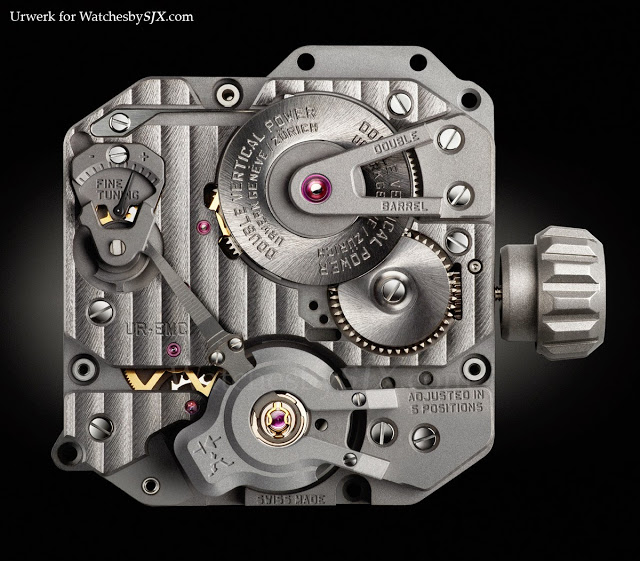
Urwerk watches have always had some sort of feature which allows some interaction with the wearer. The UR-210 for example has an activity indicator that shows the difference between power reserve generated and consumed. The new Urwerk EMC takes that idea to an entirely new level, thanks to a novel combination of mechanical watchmaking and electronics.
The timekeeping part of the EMC movement is entirely traditional. It has a Swiss lever escapement, with an in-house balance wheel in ARCAP, a non-ferrous alloy. Urwerk designed the balance wheel to optimise aerodynamics and amplitude in all positions.
.jpg) |
| The balance wheel with the optimal sensor over it |
Additionally, the movement has twin mainsprings, mounted on the same axis, but in separate barrels.
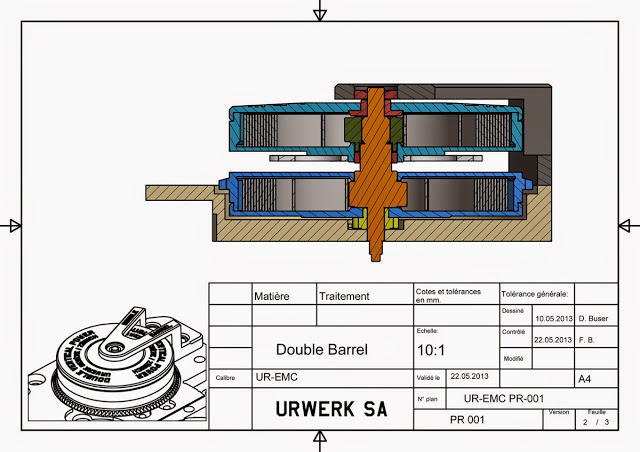 |
| Twin mainsprings |
And the user interaction comes in the form of a timing screw on the back of the watch, which the wearer can use to adjust the rate of the movement, by changing the active length of the balance spring, much like what a watchmaker would do during regulation.
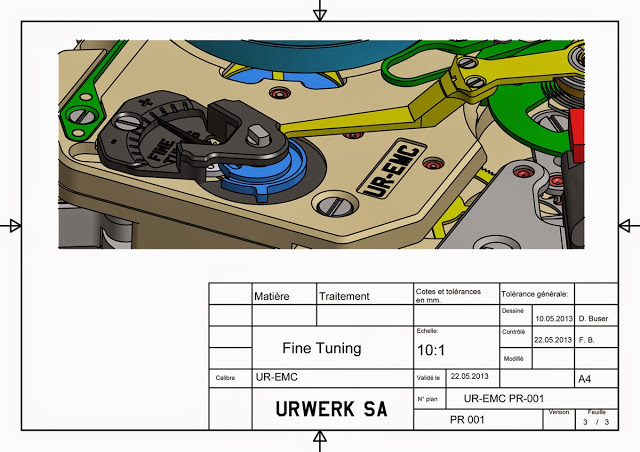 |
| User adjustable timing screw |
How much the wearer should tweak the rate is indicated by the electronics of the movement. This comprises three components:
1. An optical sensor which uses a light to monitor the oscillations of the balance wheel, which beats at 28,800 bph or 4 Hz. Shown in red below, the optical sensor has an LED light on the top, and a sensor below the balance wheel in green. The apertures in the middle of the balance allows light from the LED to reach the sensor, which then measures the frequency of the light and thus the rate of the balance.
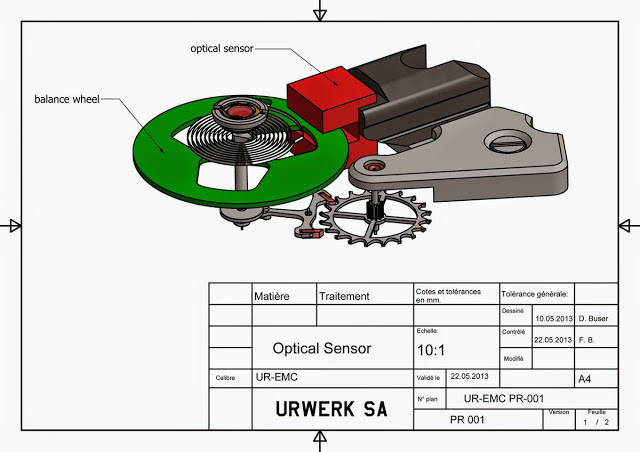 |
| The escapement of the EMC |
2. A electronic oscillator beating at 16 MHz, or 16,000,000 Hz, essentially a quartz oscillator but one which runs at a far higher frequency than a regular quartz oscillator.
3. An integrated circuit which calculates the difference between the actual rate of the balance wheel, and the reference rate set by the electronic oscillator. The difference is then displayed on the back of the watch.
.jpg)
No battery is needed for the electronics of the EMC, instead it is powered by a hand-operated generator which charges a capacitor.
.jpg) |
| The twin mainsprings in the foreground |
So how it would work is simple: the wearer needs to crank up the generator, and then press a button to start the electronic monitoring system. The difference in rate is displayed on the indicator, which allows the wearer to adjust the rate of the mechanical movement as necessary.
From what I understand, the price of the EMC will be in the UR-110 ballpark (in the region of US$75,000 to US$100,000), rather than that of the UR-210. Interestingly the EMC is somewhat similar in concept to the Seiko Spring Drive, except that the Spring Drive is entirely autonomous, requiring no user adjustment. The Spring Drive has an integrated circuit which measures the rate of the balance, and also an electromagnet which accelerates or brakes the balance to maintain a constant frequency.
– SJX
.jpg)

